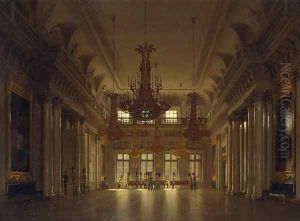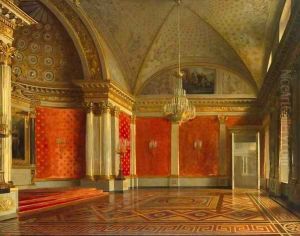Sergey Konstantinovich Zaryanko Paintings
Sergey Konstantinovich Zaryanko was a distinguished Russian artist, born in 1818 in the village of Lyublino, near Moscow, into a serf family. Despite the constraints imposed by his serfdom status, Zaryanko's undeniable talent in art paved the way for his emancipation and subsequent education in the arts. He studied at the Moscow School of Painting, Sculpture and Architecture, where he was under the tutelage of Vasily Tropinin, a respected artist of the time, known for his portraits and genre scenes. Tropinin's influence is evident in Zaryanko's work, especially in his approach to portraiture.
During his career, Zaryanko became renowned for his portraits and interior genre scenes, which were highly regarded for their intricate detail, use of color, and the psychological depth he brought to his subjects. His ability to capture the nuances of personality and mood in his portraits set him apart from many of his contemporaries. Zaryanko's works provide a valuable glimpse into the social and cultural life of 19th-century Russia, reflecting the tastes and values of the Russian nobility and bourgeoisie.
In 1843, Zaryanko was awarded the title of Academician by the Imperial Academy of Arts, an accolade that marked the peak of his career and acknowledged his contribution to Russian art. Despite this recognition, he continued to work tirelessly, contributing to the development of Russian portraiture and teaching the next generation of Russian artists.
Zaryanko's legacy is not just in the portraits and scenes he painted but also in his role as an educator. He taught at the Moscow School of Painting, Sculpture and Architecture, where he had once been a student, passing on his skills and knowledge to future artists. His dedication to the development of Russian art made him a pivotal figure in the Russian art scene of the 19th century.
Sergey Konstantinovich Zaryanko died in 1870, leaving behind a rich body of work that continues to be celebrated for its contribution to Russian art history. His paintings are preserved in various museums and private collections, serving as a testament to his skill and the beauty of 19th-century Russian portraiture.

